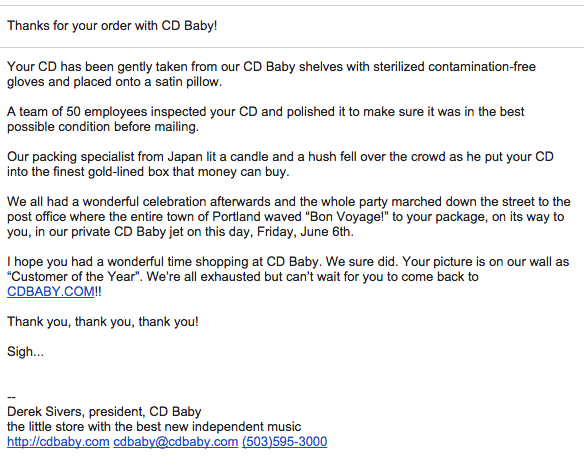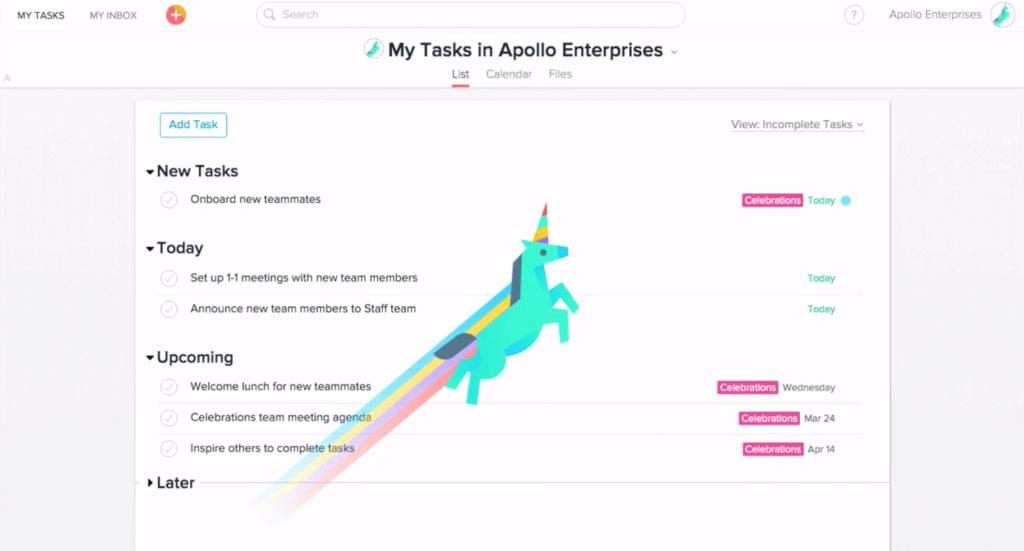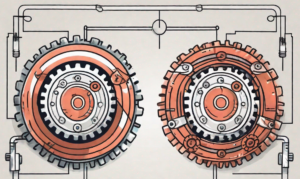The Peak–end Rule
Nobel Prize winner Daniel Kahneman suggested that modern-day humans employ a a psychological heuristic (basically, a mental shortcut) called the peak—end rule, which states:People judge an experience largely based on how they felt at its peak (i.e., its most intense point) and at its end, rather than based on the total sum or average of every moment of the experience. The effect occurs regardless of whether the experience is pleasant or unpleasant.Let’s think about that for a second. It’s a big deal. When we remember experiences, we tend to recall only snapshots of the key events that happened. This means that we might easily recall a singular negative event (like a rude customer service representative) and forget the better but smaller aspects of the experience (like a well-designed website). Or, vice versa, we might dislike an experience overall (bad website UX), but what we’ll remember later is the terrific customer service received.
The Peak–end Rule: an Everyday Example
An everyday example of this is movies. Have you ever watched a brilliant movie, only for it to be spoiled by a disappointing ending? Two hours of spellbinding suspense can be rendered useless with a bad ending, much like an exciting online shopping experience can be ruined by a confusing/frustrating checkout. Even if the middle of the experience was faultless, that’s not the aspect of the experience that users will remember.Boost Peak Moments with Friction
So we know that our brains like shortcuts. We know they remember the end and the most intense moments of an experience more than any other moment. In addition to that, we should also remember that our memories are faulty; they aren’t always correct. People won’t always remember what you said to them, but they’ll remember how you made them feel. So, with that in mind, we can then make changes to the experience to ensure that users forget negative moments, and remember positive ones. Some menial tasks, such as filling out a form, users won’t want to remember. By simplifying the experience and removing friction, users can breeze through this step. We don’t want the peak moment to be a horrendous one.Airbnb Example
The same applies to positive experiences. Let’s say you’ve booked an apartment on Airbnb. That’s pretty exciting, right? Of course it is: you’re going on holiday! To ensure the possibly frustrating search experience doesn’t overshadow the excitement of your booking, Airbnb adds friction to keep you excited for a little longer. Here’s what Airbnb does:- shows you things to do in the area
- lets you read the house manual
- lets you send the itinerary to your travel buddies
- helps you find directions to the address
- sends you an exciting “You’re going away!” message
Uber Example
Remember taxis? Remember arriving at your destination and then fiddling around for cash? Yeah, this can be awkward. You realize you don’t have the right change, so you pay with credit card; the card machine isn’t working, so you have to drive to the ATM. It’s a rather awful, frustrating, embarrassing experience. Your Uber account is linked to your bank card. Once you’ve arrived at your destination, you hop out of the car and you’re done. Fiddling around for cash is not necessary; that pain point has been removed, and so the user walks away with their final experience with Uber being one of delight.Embrace “Flat” Moments
Flat moments are moments that are neither fun nor boring. An excellent example of a “flat moment turned memorable” might be from way back in the early 2000s, from an e-commerce website called CD Baby. Typically, when you make a purchase online, you receive an email confirmation to notify you that your purchase went through smoothly. This is fairly standard, and important. Derek Sivers at CD Baby knew how flat this experience would be, and didn’t want to end it with something that wasn’t memorable, so he thought he’d have some fun. He put on his best copywriting mitts and came up with the following confirmation email: People loved it. It went viral. Derek had turned a boring aspect of the experience into an unexpected delight. People were suddenly purchasing from CD Baby just to see the email (remember, this was the early 2000s!). If we map out the customer journey, we’ll find that the email had become a peak moment, and a surefire way to create a memorable experience as the user — hopefully temporarily — departs from CD Baby.
People loved it. It went viral. Derek had turned a boring aspect of the experience into an unexpected delight. People were suddenly purchasing from CD Baby just to see the email (remember, this was the early 2000s!). If we map out the customer journey, we’ll find that the email had become a peak moment, and a surefire way to create a memorable experience as the user — hopefully temporarily — departs from CD Baby.
Creating Unexpected Moments of Delight
The project management tool Asana springs to mind when I think of unexpected delight. When you complete a task, sometimes, just sometimes, you’ll see a unicorn fly across the screen.
A screen shot of a unicorn flying across the screen. (See the original animated GIF on the Asana Blog.)
Improving vs Flattening a Peak Moment
A quick thought experiment: what would you prefer, a 45-minute train commute or a 55-minute train commute? If you decided upon the 45-minute commute, consider this: the 45-minute commute is without Wi-Fi, but the 55-minute commute has exceptional Wi-Fi. Which is better now? If I were on the train for business, I’d be frustrated at losing an hour of my day where I could be doing work. With Wi-Fi, the time matters not. If I were on holiday and the train travels down a beautiful coastline, then a longer journey is actually better, whether there’s Wi-Fi or not. Context matters.- Can a negative experience be improved?
- If not, can it be shortened or flattened?
- Which would have the best result overall?
Conclusion
We’re not rational beings. We’re lazy, we’re forgetful, we’re impatient. Our brains like shortcuts. All of these facts come into play when we’re designing UX, and we should be thinking about these flaws in human psychology every step of the way. Activities like journey mapping help us not only to build empathy for users, but really examine the journey that users take as they navigate our digital interfaces and the emotional roller coaster that can be. So how can we succeed? We can be consciously aware of the “big moments” in the experiences we create, reducing friction at tricky moments, boosting friction at delightful moments, and ending the overall experiences on a highly positive note.Frequently Asked Questions (FAQs) about Designing Highly Memorable Experiences
What are the key elements in designing a highly memorable experience?
The key elements in designing a highly memorable experience include creating a strong emotional connection, providing a unique and personalized experience, and ensuring the experience is engaging and interactive. It’s also important to consider the sensory aspects of the experience, as these can greatly enhance memorability. Lastly, the experience should be meaningful and have a lasting impact on the individual.
How can I create a strong emotional connection in my design?
Creating a strong emotional connection in your design can be achieved by understanding your audience’s needs, desires, and emotions. This can be done through user research, empathy mapping, and persona creation. Once you understand your audience, you can design experiences that resonate with them on an emotional level.
How can I make my design unique and personalized?
Making your design unique and personalized can be achieved by incorporating elements that are specific to the individual user. This could include using their name, preferences, or past behavior to tailor the experience. Additionally, you can use innovative and creative design elements to make your design stand out from the competition.
How can I ensure my design is engaging and interactive?
Ensuring your design is engaging and interactive can be achieved by incorporating elements of gamification, interactivity, and user participation. This could include quizzes, challenges, or interactive elements that encourage user engagement and participation.
How can sensory aspects enhance the memorability of my design?
Sensory aspects can greatly enhance the memorability of your design by engaging the user’s senses. This could include using vivid colors, engaging sounds, or tactile elements. By engaging the user’s senses, you can create a more immersive and memorable experience.
How can I make my design meaningful and impactful?
Making your design meaningful and impactful can be achieved by ensuring the experience provides value to the user. This could be through providing useful information, solving a problem, or creating a positive emotional impact. Additionally, the experience should align with the user’s values and beliefs to create a deeper connection.
What role does user research play in designing memorable experiences?
User research plays a crucial role in designing memorable experiences as it helps you understand your audience’s needs, desires, and emotions. By understanding your audience, you can design experiences that resonate with them and create a strong emotional connection.
How can I use gamification to enhance the memorability of my design?
Gamification can enhance the memorability of your design by making the experience more engaging and interactive. This could include incorporating elements of play, challenges, or rewards to motivate and engage users.
How can I use personalization to enhance the memorability of my design?
Personalization can enhance the memorability of your design by making the experience more relevant and tailored to the individual user. This could include using the user’s name, preferences, or past behavior to customize the experience.
How can I use innovative and creative design elements to make my design stand out?
Using innovative and creative design elements can make your design stand out and be more memorable. This could include using unique layouts, animations, or interactive elements. Additionally, you can use creative storytelling or narrative elements to engage the user and enhance the memorability of the experience.
 Vincent Feeney
Vincent FeeneyVinny is an experience designer based in Melbourne, Australia. He's passionate about using design thinking and experience design in business big and small, whatever the budget. You can read about his work on his personal website or follow him on Twitter (@doublethought).


